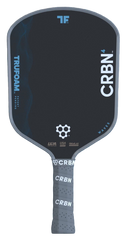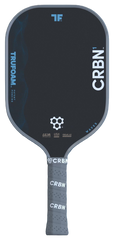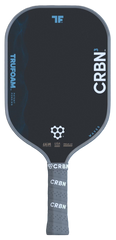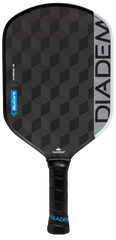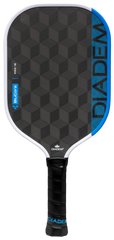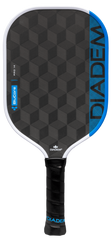Pickleball has been rapidly growing in popularity, and with its rise, players are becoming more interested in finding the perfect pickleball paddle. Whether you're a beginner or a seasoned player, choosing the right paddle can significantly impact your game. In this comprehensive guide, we'll answer the ten most common questions about pickleball paddles to help you make an informed decision.
1. What Materials Are Pickleball Paddles Made Of?
Pickleball paddles come in various materials, each offering distinct advantages and playing characteristics. The primary materials used in paddle construction are wood, composite, and graphite.
- Wood Paddles: These are the most affordable and durable but are heavier and offer less control. They're ideal for beginners or those on a tight budget.
- Composite Paddles: Made from a combination of materials such as fiberglass, polymer, and aluminum, composite paddles offer a good balance of power and control. They are lighter than wood paddles and often come with a textured surface for better spin.
- Graphite Paddles: These are the lightest and most expensive paddles. Graphite paddles provide excellent control and power, making them a favorite among advanced players.
2. How Does Paddle Weight Affect Performance?
The weight of a pickleball paddle is crucial to your performance and comfort. Paddles generally range from 6 to 14 ounces, and the weight you choose will depend on your playing style and physical condition.
- Lightweight Paddles (6-7.5 ounces): These paddles are easier to maneuver and allow for quicker reactions at the net. They are ideal for players who rely on speed and precision.
- Midweight Paddles (7.6-8.4 ounces): Offering a balance between power and control, midweight paddles are versatile and suitable for most players.
- Heavyweight Paddles (8.5 ounces and above): These paddles provide more power and are beneficial for players who prefer a stronger hit. However, they can be harder to control and may cause fatigue during extended play.
3. What Grip Size Should I Choose?
Choosing the right grip size is essential for comfort and control. A grip that's too small or too large can lead to poor performance and even injury. Grip sizes typically range from 4 to 4.5 inches in circumference.
- Small Grip (4 - 4.125 inches): Ideal for players with smaller hands or those who prefer a bit more wrist action for spin and control.
- Medium Grip (4.25 - 4.375 inches): This size is suitable for most players and provides a good balance of control and comfort.
- Large Grip (4.5 inches and above): Best for players with larger hands or those who prefer a firm, steady grip.
To find the right grip size, measure your hand's circumference or try different paddles to see which feels most comfortable.
4. How Does Paddle Shape Influence Play?
Pickleball paddles come in various shapes, each affecting play style and performance differently. The most common shapes are standard, elongated, and wide-body.
- Standard Shape: These paddles are around 15.5-16 inches long and 7.5-8 inches wide. They offer a good balance of power and control, suitable for most players.
- Elongated Shape: Longer paddles (up to 17 inches) provide extra reach and power, making them ideal for singles play. However, they have a smaller sweet spot, which can affect control.
- Wide-Body Shape: These paddles are wider (up to 8.5 inches) and have a larger sweet spot, offering better control and forgiveness. They are great for beginners and doubles play.
5. What Is the Importance of the Paddle Core?
The core of a pickleball paddle significantly impacts its performance, including power, control, and feel. The three main types of paddle cores are polymer, aluminum, and Nomex.
- Polymer Core: The most popular core material, polymer cores are durable and provide a good balance of power and control. They offer a softer feel, which is easier on the arm.
- Aluminum Core: Known for their lightweight and durability, aluminum cores provide excellent control and a solid feel. They are preferred by players who prioritize precision over power.
- Nomex Core: Made from a lightweight, honeycomb-shaped material, Nomex cores offer excellent power and durability. They are stiffer and provide a more tactile feel, making them suitable for power hitters.
6. How Does Paddle Thickness Affect Performance?
Paddle thickness can influence the balance, feel, and performance of your game. Most paddles range from 10 to 16 millimeters in thickness.
- Thicker Paddles (13-16 mm): These paddles offer more control and a softer feel, making them ideal for players who prioritize precision and placement. They also provide better shock absorption, reducing the risk of injury.
- Thinner Paddles (10-12 mm): Thinner paddles are lighter and offer more power, making them suitable for aggressive players who rely on hard hits. However, they may provide less control and shock absorption.
7. What Role Does Paddle Surface Texture Play?
The surface texture of a pickleball paddle can affect spin and control. Textured paddles allow for better ball grip, making it easier to impart spin and control shots.
- Smooth Surface: Provides a clean, consistent hit with less spin. Suitable for players who rely on placement and precision.
- Textured Surface: Enhances ball grip, allowing for better spin and control. Ideal for players who use spin as part of their strategy.
When choosing a paddle, consider your playing style and whether spin is an essential part of your game.
8. How Do I Choose the Right Paddle for My Skill Level?
Your skill level should influence your paddle choice, ensuring you get the most out of your game.
- Beginners: Look for affordable, durable paddles with a large sweet spot and good control. Composite or wood paddles are excellent choices.
- Intermediate Players: Opt for paddles that offer a balance of power and control. Midweight composite or graphite paddles with a medium grip size are ideal.
- Advanced Players: Choose high-quality graphite or composite paddles that provide excellent power, control, and spin. Consider your playing style and preferences when selecting the right paddle.
9. How Do I Maintain My Pickleball Paddle?
Proper maintenance can extend the life of your pickleball paddle and ensure consistent performance. Here are some tips to keep your paddle in top condition:
- Clean Regularly: Wipe down the paddle surface with a damp cloth after each use to remove dirt and debris. Avoid using harsh chemicals or abrasive materials that could damage the surface.
- Protect the Edge Guard: The edge guard protects the paddle from impacts and wear. Check it regularly for damage and replace it if necessary.
- Store Properly: Store your paddle in a cool, dry place, away from direct sunlight and extreme temperatures. Consider using a paddle cover or bag for added protection.
- Avoid Excessive Force: Avoid slamming your paddle on the ground or hitting hard surfaces, as this can cause damage and reduce its lifespan.
10. What Are Some Recommended Pickleball Paddle Brands?
There are several reputable brands known for producing high-quality pickleball paddles. Here are some of the top brands to consider:
- Joola: Known for its innovation and high-performance paddles, Joola offers a range of paddles that cater to different playing styles and skill levels. Their paddles are designed with advanced materials and technology, providing excellent control and power.
- CRBN: CRBN paddles are celebrated for their precision and spin. They are crafted with cutting-edge materials and feature unique designs that enhance performance. CRBN is a great choice for players looking to up their game with advanced paddle technology.
- Selkirk: Selkirk Sport is renowned for its premium-quality paddles that combine power, control, and durability. Their wide range of paddles suits players of all levels, making them a popular choice in the pickleball community.
- Engage: Engage Pickleball focuses on paddle technology that maximizes control and spin. Their paddles are favored by competitive players for their performance and reliability. Engage paddles are designed to enhance every aspect of your game.
- Diadem: Diadem offers paddles that blend power and control with a comfortable feel. Their innovative designs and high-quality materials make Diadem paddles a favorite among both recreational and professional players.
When choosing a brand, consider your budget, playing style, and personal preferences. Each brand offers unique features and benefits, so take the time to find the one that best suits your needs.
Conclusion
Choosing the right pickleball paddle can significantly enhance your playing experience, whether you're a beginner or an advanced player. By understanding the different materials, weights, grip sizes, shapes, cores, and surface textures, you can find the paddle that best matches your playing style and preferences. Remember to maintain your paddle properly to ensure it lasts and continues to perform well. With the right paddle in hand, you'll be well on your way to enjoying the exciting game of pickleball to its fullest.
